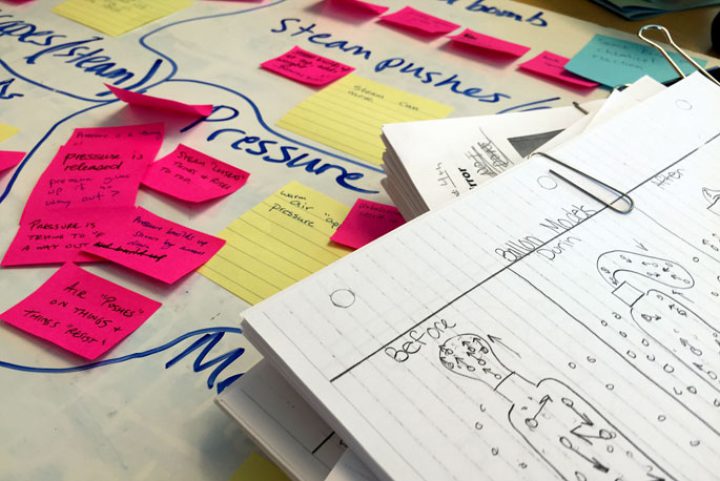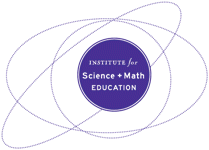Beyond “misconceptions”: How to recognize and build on Facets of student thinking

- Teachers should learn to see patterns in the range of students’ thinking about specific science topics and to plan instructional approaches that help students refine their understanding.
- District Staff & PD Providers should engage teachers in the shared analysis of the facets of reasoning present in student work and performances.
- School Leaders should visit the classroom near the beginning and the end of a unit to see how students are expressing and refining their understanding over time.
What Is The Issue?
Students bring a range of different ideas for understanding science phenomena, concepts, and representations based on their unique life experiences. Rather than simply viewing students’ intuitive or partially scientific ideas as misconceptions, the diversity of student’s ideas can be considered stepping stones to deeper understanding and teachers should actively engage with them. It is important for teachers to be able to recognize, build on, and respond to the range of ideas—or Facets of students’ thinking—during instruction.
Authors:
PHILIP BELL AND JIM MINSTRELL - JUNE 2016
Reflection Questions
- When a student says an incorrect idea, can you avoid evaluating their response as simply right or wrong? Ask them to reason about how the idea relates to evidence from their experience or to science experiences or ideas.
- What patterns of thinking do you see students express? What is their underlying model for the phenomena? How can you instructionally respond?
- How does the Facet Cluster below highlight gaps in student knowledge and reasoning?
Things to Consider
- Based on everyday experiences and attempts to explain phenomena, people naturally develop intuitive knowledge that strongly shapes their science learning. Learning research shows that it is important to attend to this prior knowledge of learners to help them develop a deeper understanding.
- Science education has a history of privileging quick scientific correctness at the expense of supporting deep conceptual learning. Learning science concepts is not easy for most people. It takes sustained cognitive and social effort. Approaching student’s incorrect or partial ideas about science as “misconceptions” often ignores the complexity of this sustained learning process.
- Facets of Thinking: There are patterns to the range of ideas that people develop about natural phenomena, science ideas, and representations. Cognitive research has documented ways in which individuals intuitively understand phenomena and refine that understanding. Facets are individual pieces or constructions of a few pieces of knowledge and/or strategies of reasoning. Facet Clusters are groupings of facets, roughly ranked from more to less productive.
*340 Fall time depends upon gravitational field strength and inversely upon fluid medium resistance
*341 With no resistance by fluid medium, vertical fall near the earth’s surface is at nearly constant acceleration of 10 m/s2
342 Gravitational pull and mass compensate with no accounting for air resistance.
343 Greater drag effects compensate for greater gravitational pull explaining equal accelerations
344 Medium effects will exist even when there is no motion relative to fluid medium
345 All things fall equally fast regardless of medium effects
346 Vertical fall is at a constant velocity of 10 m/sec
348 Heavier will hold back more (fall slower)
348-1 Larger falls substantially slower
349 Heavier falls faster
349-1 Larger falls faster
Facets organized from more to less productive.
Attending to Equity
- Students bring relevant knowledge for making sense of science phenomena. It is their right and responsibility to express, leverage, and refine this knowledge. Students not supported in expressing and refining their ideas are not being engaged in powerful learning.
Recommended Actions You Can Take
Explore Diagnoser.com to see how to use facets in instruction.
Use a Protocol to Identify & Attend to Facets of Student Thinking:
- Collect Responses for a Facet Cluster: Identify a piece of student work focused on explaining an event (e.g., falling objects) or understanding the meaning or use of a key idea (e.g., average speed).
- Organize Responses: Closely read the student responses and categorize the different types of responses into 3 to 5 different groups. Try to get to the essence of different kinds of responses.
- Identify Facets: Characterize the meaning behind each group of responses. Adopt a stance of: Why might an intelligent person in this class give this response? What do they seem to be thinking?
- Instructionally Respond: Intentionally choose activities that will address less productive facets. Do students need to closely observe the phenomena, separate two related ideas from each other (e.g., acceleration from speed), or integrate two seemingly different ideas?
ALSO SEE STEM TEACHING TOOLS
STEM Teaching Tools content copyright 2014-22 UW Institute for Science + Math Education. All rights reserved.
This site is primarily funded by the National Science Foundation (NSF) through Award #1920249 (previously through Awards #1238253 and #1854059). Opinions expressed are not those of any funding agency.
Work is licensed under a Creative Commons Attribution-ShareAlike 4.0 Unported License. Others may adapt with attribution. Funded by the National Science Foundation (NSF). Opinions expressed are not those of any funding agency.


 Email Feedback
Email Feedback


